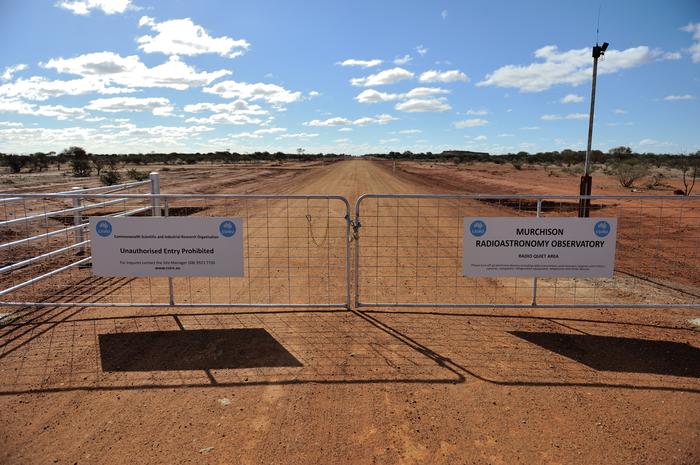Australia was one of seven nations to sign a treaty in Rome this week, to establish the intergovernmental organisation that will deliver the world’s largest radio telescope, the Square Kilometre Array (SKA).
Once complete, the SKA will be the “largest science facility on the planet”, made up of hundreds of dishes in the remote desert regions of South Africa and 132,000 antennas spread over 65 kilometres of the Murchison in Western Australia.
Scientists will use the array to research “one of the most interesting periods of the Universe, looking back to the first billion years of the Universe to look at the formation of the first stars and galaxies” the signatories said.
The Australian part of the array will provide 25 per cent better resolution, be eight times more sensitive and scan the sky 135 times faster than today’s best low frequency telescope, the LOFAR network in the Netherlands.

The project comes at significant cost, with around $1.1 billion worth of construction contracts set to be awarded from 2020. The Australian government is investing $293 million over 10 years towards building and initially operating the SKA.
The formation of the intergovernmental organisation this week – the SKA Observatory (SKAO) – follows close to four years of negotiations by diplomats and lawyers. The next step will be for the signatories – from Australia, China, Italy, The Netherlands, Portugal, South Africa and the United Kingdom – to ratify the treaty in their home legislatures.
Government representatives from India, Sweden, Canada, France, Malta, New Zealand, the Republic of Korea, Spain and Switzerland attended the treaty signing, and are expected to become members of the SKAO soon.
Dr Greg French @AusAmbRome signs the #SKAtreaty on behalf of Australia, marking the nation's commitment to the next stage of the global SKA project! Congratulations to all signatories, as well as @CSIRO_ATNF and @ICRAR closer to home📡🙌 pic.twitter.com/EX19GF3mgc
— SKA Australia (@SKA_Australia) March 12, 2019
“Rome wasn’t built in a day. Likewise, designing, building and operating the world’s biggest telescope takes decades of efforts, expertise, innovation, perseverance, and global collaboration. Today we’ve laid the foundations that will enable us to make the SKA a reality,” said Dr. Catherine Cesarsky, chair of the SKA board.
SKAO is the second intergovernmental organisation dedicated to astronomy in the world, after the European Southern Observatory.
Mysteries of the universe
More than a thousand engineers and scientists in 20 countries have been involved in designing the SKA over the past five years.
Last month, the CSIRO-led consortia tasked with building out local infrastructure in Australia – Infrastructure Australia – formally completed their design work.
The designs cover the practical, such as roads, buildings, water and sanitation; and the technical, like the 65,000 optical fibre cables to carry the huge amounts of data (equivalent to five times the Internet traffic rate) generated by the low frequency aperture array antennas.

Given the sensitivity of the antennas, radio shielding of on-site computers and power systems is essential, and the federal and WA governments have declared a radio quiet zone in a 520-kilometre diameter area around the antennas.

There is a major computing challenge involved, being tackled by scientists from a number of Australian universities and institutions. The University of Western Australia and CSIRO is designing and verifying the ‘Science Data Processing System’, a highly efficient supercomputer able to ingest 3.1 Terabytes of raw data and process observations involving 50 Petabytes.
Swinburne University of Technology is designing the specialised hardware and software needed for the project’s pulsar timing engine, while CSIRO is leading an international effort to develop the telescope’s correlator and beamformer, nicknamed Perentie. Perentie will be a highly specialised processor able to convert the deluge of data from the SKA1 Low's thousands of antennas into a stream of useful data for downstream processing.
The data generated by the SKA in Australia and South Africa is expected to enable astronomers to study gravitational waves and test Einstein’s theory of relativity in extreme environments, investigate the nature of mysterious fast radio bursts, map hundreds of millions of galaxies and look for signs of life in the Universe.
“Like Galileo’s telescope in its time, the SKA will revolutionise how we understand the world around us and our place in it,” said SKAO director general Professor Philip Diamond.

